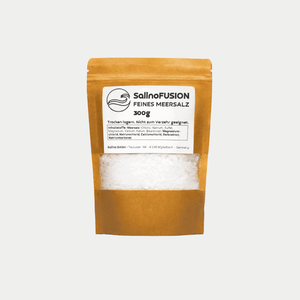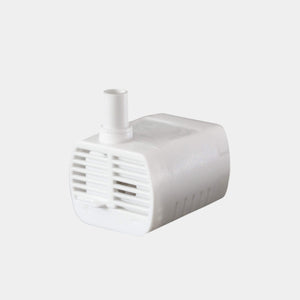When breath tastes of the sea

There are moments when a breath becomes more than a habit—it becomes an experience. Anyone who has ever stood in front of a graduation tower knows this moment: The air tastes salty, feels thicker, and with each breath, your chest seems to expand. In Thuringia, a state famous for its forests, spas, and cultural history, graduation towers are silent symbols of this tradition.
From Bad Salzungen to Bad Sulza, they have shaped entire towns. Once built to extract salt, they now serve as places of relaxation where people can find peace, catch their breath, and experience a touch of the sea in the middle of the inland. But they are more than just healthcare architecture—they are cultural monuments that combine landscape, history, and the healing arts.
However, anyone who regularly visits the graduation towers in Thuringia also knows the other side: travel distances, entrance fees, sometimes entire afternoons that you have to free up. Over time, the visits add up – both in terms of time and money. Therefore, many people ask whether there isn't a way to incorporate salt air into their daily routine as a daily ritual. Before we explore this idea, we'll travel to Thuringia's two most important graduation towers – places where breathing in the salt itself becomes an encounter with history.
Bad Salzungen - salt air from centuries-old tradition
Bad Salzungen is considered the heart of Thuringia's salt history. Brine was extracted here as early as the Middle Ages, and the mighty graduation towers in the spa gardens remain the town's landmark to this day. The most concentrated brine, with a salt content of 27 percent, was extracted in Bad Salzungen, Thuringia—a record value that underscores the town's importance.
The brine trickles in a steady stream over blackthorn brushwood, enriching the air with a thick, salty mist. Visitors report that breathing here is more intense and liberating than in many other places. Especially in the early morning, when the mist settles over the park and the old saltworks becomes visible in the background, Bad Salzungen unfolds its full effect: a place where healing tradition and landscape combine in a striking way.
The first graduation houses were built in Bad Salzungen as early as 1590. They significantly increased the boiling yield. A total of 24 graduation towers were built on both sides of the Werra River, some of which were approximately 400 meters long and 8 meters high. The salt mist created by the water trickling down has a healing effect on respiratory diseases such as asthma and bronchitis.
Today's graduation tower is an impressive monument to this history. It has been carefully preserved and modernized over the past decades without losing its historic character. The dark blackthorn walls, coated with white salt crystals, form a striking contrast to the green park landscape.
Bad Salzungen's spa gardens are spacious and ideal for long walks. Many visitors spend hours here, strolling between the graduation tower and the brine springs, enjoying the tranquil atmosphere and consciously inhaling the salty air. For people with chronic respiratory diseases, Bad Salzungen has become an important destination—a place where they experience noticeable relief.
The town itself has closely interwoven its identity with salt. The Salt Museum documents the history of the "white gold," and many streets and buildings bear names that evoke the salt tradition. Bad Salzungen is more than a spa town—it's a place where salt is lived.
Bad Sulza - Louise graduation tower
In Bad Sulza, a spa town in the Saale-Unstrut region, stands the "Louise" graduation tower – a facility that testifies to remarkable architectural and craftsmanship. Many original parts remain in their original condition to this day. The "Louise" graduation tower is now 142 meters long and is one of the most impressive preserved structures in Thuringia.
Every day, the graduation tower "consumes" 6-8 cubic meters of brine, which trickles down the blackthorn walls and enriches the air with salt particles. The facility is named after Louise of Saxe-Weimar-Eisenach, who significantly promoted the development of the spa town in the 19th century.
Visitors experience a special atmosphere here: The graduation tower is located in a well-kept spa gardens, surrounded by vineyards and the rolling hills of the Saale-Unstrut Valley. The combination of salt air and wine culture makes Bad Sulza unique. Many guests combine their visit to the graduation tower with a wine tasting at one of the nearby wineries.
Bad Sulza is also known for its Toskana Therme, one of the most modern thermal spa facilities in Thuringia. The combination of a historic graduation tower and a contemporary thermal spa makes the town a versatile health destination. Visitors can visit the open-air graduation tower in the morning and relax in the thermal spa in the afternoon – a holistic wellness experience.
The Saale-Unstrut region is Germany's northernmost wine-growing region, boasting picturesque landscapes, historic towns, and culinary delights. Bad Sulza is centrally located in this region and is an ideal starting point for excursions. The Saale-Unstrut Wine Route runs through the surrounding area, connecting numerous wineries, castles, and cultural and historical sights.
The "Louise" graduation tower is freely accessible and operates year-round. Benches along the grounds invite visitors to linger, and many take the opportunity to read a book or simply listen to the rhythmic trickling of the brine. The atmosphere is meditative and calming—a place where time seems to stand still.
The craftsmanship that went into the graduation tower is remarkable. The structure, made of wood and blackthorn, was built using traditional methods and maintained for generations. Each individual layer of blackthorn was carefully stacked, each beam precisely fitted. This quality is still evident today and makes the graduation tower a technical monument.
Bad Sulza has undergone significant development in recent years. Investments in the Toskana Therme spa and the maintenance of the historic graduation tower have made the town an attractive destination for health tourists. The combination of tradition and modernity, wine culture and salt air, nature and wellness is unique in Thuringia.
Conclusion: Salt air between tradition and everyday life in Thuringia

The two graduation towers in Thuringia—Bad Salzungen and Bad Sulza—represent different aspects of salt history. Bad Salzungen stands for the monumental tradition of salt production, for a town that lived off "white gold" for centuries. The graduation tower here is mighty, historically significant, and deeply rooted in local identity.
Bad Sulza, on the other hand, demonstrates how salt air can be integrated into a modern health and wine culture. The "Louise" graduation tower is not only a historical monument, but also a vibrant part of a contemporary spa operation. Its connection with the Toskana Therme spa and the Saale-Unstrut wine region makes Bad Sulza a versatile destination.
Together, these two places form the heart of Thuringia's salt air landscape. They demonstrate that salt air is more than just a health benefit—it's culture, history, and identity. Those who linger here breathe not only salty air, but also a piece of Thuringian history.
The graduation towers are freely accessible and are used intensively by the local population. Many locals have integrated them into their daily or weekly routine. They are meeting places where people meet, chat, and enjoy the health benefits of the salt air together.
Keeping an eye on costs
But those who regularly visit these places also know their limitations: travel distances, entrance fees for accompanying activities, and time quickly add up to a burden. What begins as a pleasant excursion becomes a noticeable investment with frequent repetition—not only financially but also organizationally.
From Erfurt to Bad Salzungen, it's about 50 kilometers, and about 60 kilometers to Bad Sulza. From Weimar to Bad Sulza, it's only about 25 kilometers, but almost 90 kilometers to Bad Salzungen. Those coming from Jena have a short journey of about 30 kilometers to Bad Sulza, but over 100 kilometers to Bad Salzungen.
With two visits per week, the miles add up quickly. Even at a moderate 50 kilometers per trip (round trip), with a fuel consumption of 7 liters per 100 kilometers, that results in about 3.5 liters of gasoline per visit. At a gasoline price of €1.70, that's about €6 per trip, about €48 per month, and just under €600 annually – just for the trips to a free-to-access graduation tower.
Add to that the time invested. Traveling to and from the hospital, finding a parking space, and the actual stay can easily add up to two to three hours per visit. With two visits per week, that's 16-24 hours per month, and 200-300 hours per year—more than a full workweek.
The alternative for everyday life
A mini-saltworks offers a way to bring salt air into your everyday life. It operates on the same principle as the large graduation towers, but in a compact form and independent of location or opening hours.
The principle is simple: A saline solution is passed over a special surface and evaporates into fine aerosols. These enrich the room air with salt particles, creating a microclimate similar to that of a graduation tower. The effect on the respiratory system is comparable, except that it is available daily and effortlessly.
Compared to the cost of recurring visits, the initial investment often pays for itself in just a few months. Even if only travel costs are considered, and the graduation towers themselves are free of charge, the €600 per year calculated above results in significant savings in less than two years.
If you factor in the time invested—assuming an hourly rate of €20 for your own leisure time—the €600 travel costs add up to approximately €3,840–€5,760 in "time costs." Of course, this figure is subjective, but it illustrates that the true effort goes far beyond the travel costs alone.
The best of both worlds
Thus, the salt air not only remains a special experience in the spa park, but also becomes a daily companion for respiratory health, well-being and inner balance - right in your own home.
The graduation towers in Bad Salzungen and Bad Sulza retain their special significance. They are places for conscious relaxation, for vacations or weekend getaways. The monumental complex in Bad Salzungen, with its centuries-old history, cannot be transferred to a living room. The historic "Louise" graduation tower in Bad Sulza, with its panoramic vineyard views, is an experience for all the senses that should be enjoyed again and again.
However, for daily respiratory care, continuous health care, and the integration of salt air into a holistic lifestyle, a mini-salt bath offers a practical addition. It doesn't replace the experience of a visit to Thuringia's spa towns, but rather extends it into everyday life.
This creates a concept that combines tradition and modernity: the large graduation towers for special moments, the local mini-saltworks for daily routine. Together, they form a holistic health concept that unites past and present, experiences and everyday life, special retreats and daily care.
Thuringia remains a state where salt history is alive. Bad Salzungen and Bad Sulza will continue to attract visitors who want to experience the power of the brine and the beauty of the landscape. But health doesn't wait for the next excursion—it also happens at home, every day, with every breath.
(Image sources: Adobe Stock)



